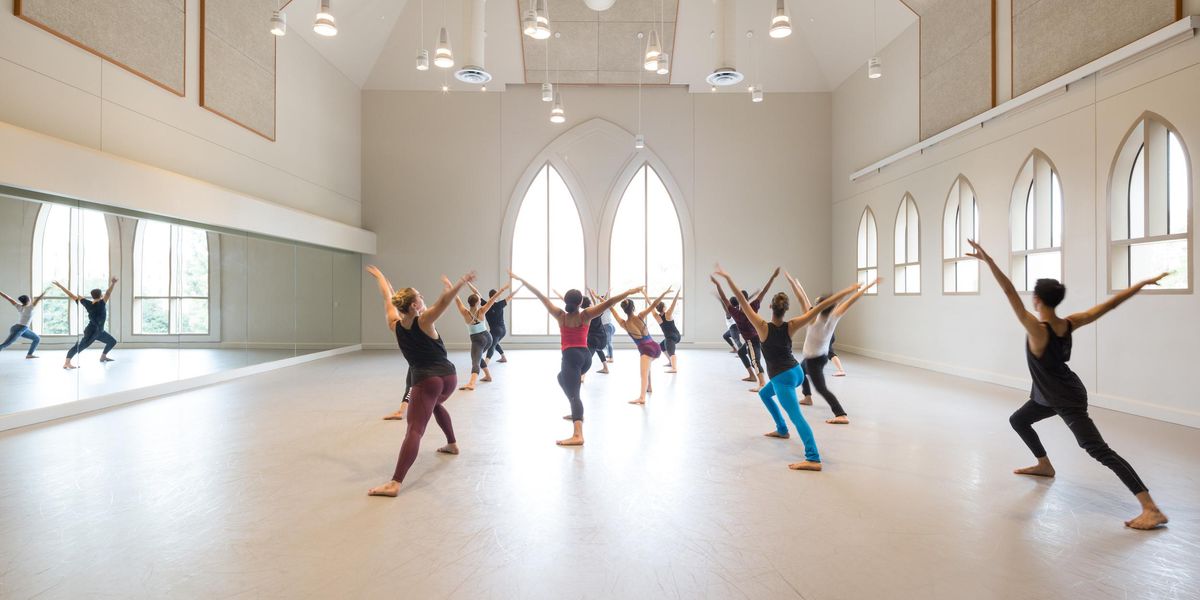Fall for Dance
New York City Center
Sept. 27–Oct. 13, 2012
Programs 1, 3 and 5
The annual Fall for Dance Festival offers astounding global variety inexpensively, and continues to be wildly popular in its ninth season. Several New York premieres in three evenings are reviewed here.
The first program (seen on Sept. 27) featured Fang-Yi Sheu & Artists in Christopher Wheeldon’s Five Movements, Three Repeats. The superb cast included New York City Ballet stars Wendy Whelan, Tyler Angle, and Craig Hall, plus Sheu, a powerful alumn of the Martha Graham Dance Company who, now based in Taiwan, appears too rarely in New York. The first movement—in which each dancer performs a unique phrase—repeats three times, sandwiching duets and trios. To Otis Clyde’s contemplative ballad, “This Bitter Earth,” Whelan (on pointe) and Angle both show delicacy, strength, and sublime partnering compatibility. Sheu and Hall’s duo is more muscular and tension-filled; they collide, pull apart, and run and leap backwards in circles. Sheu is a hypnotic performer; it’s heartening to see her collaborate with other inspiring artists.
Ballet Boyz was founded by Michael Nunn and William Trevitt who, now middle-aged, explain in a signature cheeky video that they’ve retooled with a young cast. In Void, choreographer Jarek Cemerek puts the 10 “boyz” through predictable encounters of bonding and mock fighting in front of grainy black–and-white photos of industrial neighborhoods projected on the upstage wall. Flavored strongly with hip-hop and the slick, virtuosic “contemporary” genre popular now on TV competition shows, this troupe might be most at home on Broadway; the “ballet” in its name has become misleading.
Fang-Yi Sheu in Wheeldon’s
Five Movements, Three Repeats.
Photo by Erin Baiano, courtesy Fall for Dance.
On Program Two (Sept. 30), Pam Tanowitz choreographed Fortune, to Charles Wuorinen’s spacious score, for Juilliard Dance. In hot pink and orange, the students of the class of 2013 dazzled both chromatically and technically. Tanowitz is a stylistic descendant of Merce Cunningham’s: The dancers plant their legs in wide fourth or second positions and then twist their torsos diametrically, or contract only from the waist up. It’s surprising, and unfailingly interesting. She works well with large groups, mixing and synchronizing them in variations—four arrayed trios take small lunges, or the ensemble circles the stage in tightly controlled grand jetés, except for one dancer, who scissors his legs.
The Hong Kong Ballet performed Luminous by Peter Quanz. This lyrical, romantic suite, to music by Marjan Mozetich that ranged from somber to melodious, demonstrated the dancers’ elegance and strength. But the work’s cloying sweetness was a small token of the company’s potential. It would be nice to see some range in a future visit by this handsome troupe.
Program Five (Oct. 11) included a head-spinning variety of movement styles. LDP—Laboratory Dance Project, based in Seoul, presented its signature work, No Comment (2002), in which nine men literally beat their chests to illustrate, presumably, their irrepressible life force. Chang Ho Shin’s movement derives from street forms and gymnastics; a phrase involving stamping feet and sternum-slapping is repeated countless times by the cast, which advances and retreats over and over. In a cheap attention-getter, they shed their layered street clothes and were bare-chested by the curtain call. LDP has raw energy and solid tumbling skills, but the extent of its artistic scope remains to be seen.
LDP—Laboratory Dance Project in
No Comment.
Photo by Yong Hoon Han, courtesy Fall for Dance
Circa of Australia, which specializes in circus arts, performed a best-of selection. The three women and three men work primarily body-to-body—no props—apart from an ingratiating opener in which a woman in stilettos stands on her partner’s various body parts (eliciting worried gasps from the audience) and a dazzling six–hula hoop routine performed by one snake-hipped woman. Their stunts took cues from gymnastics or pep squad feats, such as standing on each other’s shoulders three high, or two men swinging a woman by her arms and legs in loop-de-loops. Despite the fractured nature of the piece and the puzzling, dark slide projection lighting scheme, there was a freshness and honesty to the performance, although—like LDP—the company’s artistic staying power is questionable.
Members of Circa (Jesse Scott, Lewis West, Emma McGovern, Freyja Edney, and Scott Grove). Photo by Justin Nicholas/Atmosphere Photography, courtesy Fall for Dance.
In María Pagés Compañía’s Deseo y Conciencia, a flamenco medley began promisingly with a backlit Pagés in a form-fitting turtleneck and tights, stamping and clapping with conviction. Her six dancers (plus five musicians) were also clad in modern garb, if more evocative of traditional flamenco. But two more Pagés solos were self-indulgent, even alternating with additional group numbers. Pagés wore long, curvaceous gowns—one red, with a flowing skirt that converted into a shawl, evoking Martha Graham’s Chronicle (on Program Two); the other, a geometric print with a cumbersome ruffled train that she kicked around like a ball and chain. Her feet, bare in one solo, were largely trapped by or obedient to the skirts, so she curved her arms in various positions overhead, or waved them like a swan. Rather than entrancing, it read as vain. Better editing would have served both the audience and the company, which has considerable collective talent.
One final note: many of the returning companies, particularly based in New York, performed familiar works that are, presumably, crowd pleasers. But for the frequent dance viewers in the audience, it was somewhat disappointing to see ABT in Tharp’s Sinatra Suite, Martha Graham’s Chronicle, or Shen Wei’s Rite of Spring once again.
Pictured at top: Members of Juilliard Dance in Pam Tanowitz’s
Fortune.
Photo by Rosalie O’Connor, courtesy Fall for Dance.




